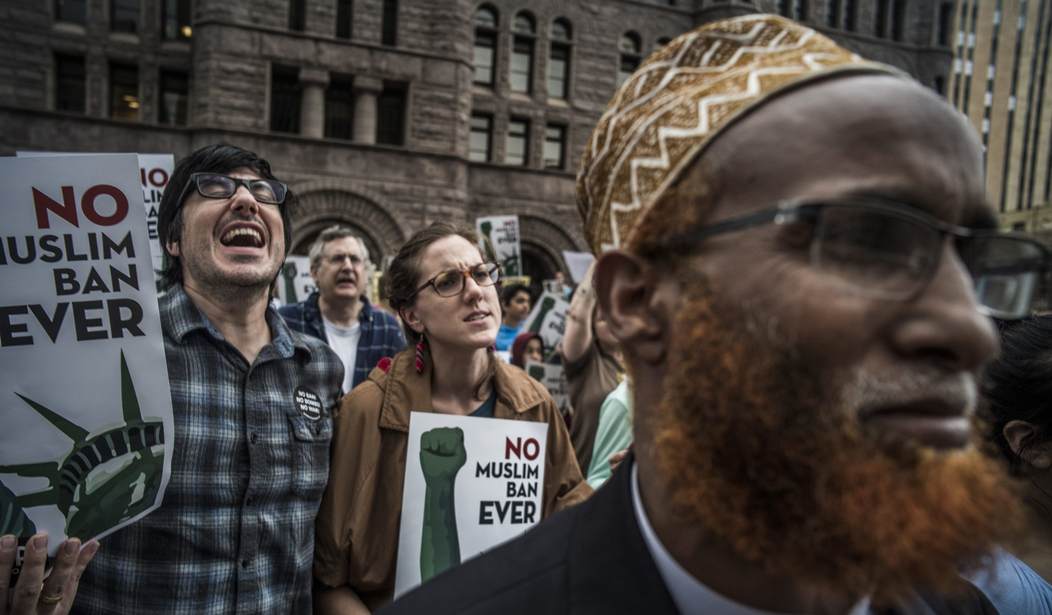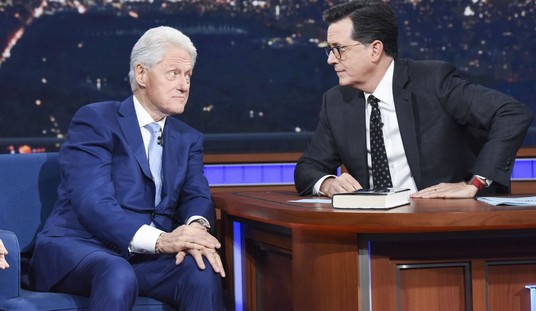Let’s start by stipulating that not every newcomer to America is a violent criminal bringing old ethnic and religious conflicts to the New World; nor is he a predatory opportunist, happy to take advantage of the stable, trusting, and yes, welcoming culture he finds. Every country has its social customs and unwritten rules, and often newcomers misinterpret them as weakness.
When the Catholic Irish arrived in large number from the middle of the 19th century on, they brought with them a deep suspicion of the police, a distrust of the Protestant ascendancy, and a pent-up willingness to work the system to their advantage — cultural survival skills they had learned during nearly a millennium of English occupation of their home country. It took them more than a full century to fully integrate into American society. Swaths of American cities, especially New York, had Irish no-go zones, into which even the Irish cops feared to tread, and even today we remember the names of the psychopath Mad Dog Coll and the suave but violent Owney Madden, chief of the Gopher Gang, who gave the world Mae West, Primo Carnera, the Cotton Club and Bill Clinton.
Similarly, the immigrant Jews from Russia and the Pale went through a short but violent gangster period (Monk Eastman, Lepke, Meyer Lansky, Benny Siegel), culminating, along with newly arrived Italians, as the triggermen for Murder, Inc. And the Sicilian contribution to urban mayhem has been well documented in print, stage, and screen.
That’s largely in the past now: nobody fears a pack of Irish boys, unless they’re drunk and it’s St. Patrick’s Day in Manhattan, or the Jewish kids studying at the yeshiva, or the Italian lawyers, chefs, and movie directors. But neither were any of these groups particularly welcomed upon arrival; instead, they were seen as cannon fodder for the Civil War, merchants, laborers, and settlers as America pushed west toward its Manifest Destiny.
Which brings us to Little Mogadishu, in the city soon to be formerly known as Minneapolis, where the good people of Minnesota — of Scandinavian, German, and Irish stock — have been busily importing people from perhaps the most culturally alien region of the world, Muslim East Africa, whose charming natives are unlikely to follow the traditional immigrant path outlined above. In Charles Dickens’s masterpiece, Bleak House, Mrs. Jellyby ignores her own brood while busily organizing aid to Africa; today’s Mrs. Jellybys have instead have brought East Africa to them.
East African community reeling from weekend violence, demands solutions
A group of Somali volunteers including Abdirahman Mukhtar, left, and Abdullahi Farah gave out pizza and tea to young people from a stand Friday in the Cedar-Riverside neighborhood.The men hope by connecting with youth and engaging them in conversation they can combat the shootings that have recently plagued the neighborhood. After the latest spasm of gang violence, Minneapolis’ Somali residents and business owners on Monday stepped up their calls for help from City Hall and police headquarters to help curb the senseless shootings that they say too often go overlooked. On Friday alone, five men of Somali descent were shot in separate attacks, one fatally.Police and community members pinned the blame for the bloodshed on an ongoing feud between Cedar-Riverside neighborhood gangs like 1627 and Madhiban With Attitude (MWA) and their rivals, the Somali Outlaws, whose territory includes the area around Karmel Mall. Friday’s shootings were a repeat of a familiar pattern: a shooting on one gang’s turf is usually followed hours, if not minutes later by an “eye-for-an-eye” response so as not to appear weak, community members say. Two shootings last month are also blamed on the conflict. As with other recent shootings, police immediately stepped up patrols in both neighborhoods to prevent further retaliation. But some in the community wondered whether they could be doing more.
What more, one wonders, can they do? If a bunch of white cops come pouring into Little Mogadishu, both coasts will be able to hear the howls unaided. Should they do nothing, then the likelihood is that the neighborhood — represented by the ineffable Ilhan Omar in the United States Congress — may well descend into the levels of violence that characterize, well, Mogadishu. Meanwhile, the media’s Complaint Department is open for business:
Russom Solomon, owner of the Red Sea Bar and Restaurant, said that responsibility for curbing the violence falls equally on police and the community, but he questioned why the two Somali-American officers recently assigned to the Cedar-Riverside beat aren’t working nights, when many of the shootings occur. “The problem we’re dealing with is that they work during the day and not during the night, so they’ve just had little effect,” said Solomon, who also chairs the West Bank Community Coalition’s safety committee. “The perception of safety is not good, people don’t feel that safe — they’re just poisoning the whole neighborhood now.”
In response to the recent violence, First Precinct inspector Eddie Frizell said he increased foot patrols, while reassigning some of his mounted patrol officers to ride in squad cars sweeping the area. He said he also has a “dedicated response car” that responds to serious crime scenes around the area after 6 p.m. But, he said, the department can’t do it alone, emphasizing the need for broad police-community partnerships to overcome cultural barriers.
Those “barriers” had to be imported as well.
The Somalis are here as legal refugees, largely. The Somalis Minnesota story tracks to 1991, when civil war broke out in Somalia. Millions fled to refugee camps, many in Kenya. Two years later, the first wave of Somali refugees were sent to Minnesota. “In the beginning the U.S. federal government assigns people,” said Dr. Ahmed Samatar. To qualify as a refugee, there is a process. The U.S. State Department ultimately decides where refugees will live, but it has to do with the voluntary agencies, called VOLAGS, that contract with the State Department.
Minnesota has very active ones like Lutheran Social Services, Catholic Charities, and World Relief Minnesota. Those agencies agree to help the refugees get settled, to learn English, find housing, get health care, and begin a new life.
There’s a problem, though. The Somalis are classified as refugees (from what? Their own societal dysfunction?) but traditionally refugees and displaced persons have been settled safely in DP camps until such time as their home countries have at least a semblance of order restored, and then they are sent home. But the Left has changed the definition to mean that “refugees” are now simply permanent Americans-in-waiting. The Greeks who came to America in the 19th and 20th centuries often stayed for a time, made some money, and then went back to their wives and children in Hellas; the same was true to a lesser extent of the Sicilians. But the likelihood of the Somalis ever returning to Somalia is nil.
Assimilation used to be the answer, but now that is politically incorrect: Balkanization is the order of the day. This is sometimes referred to as “diversity,” a descriptive term with no moral significance; it describes a condition, not a goal. But under its rubric, the Left has managed to overcome all sorts of “barriers,” including Chesterton’s Fence. Never heard of it?
In the matter of reforming things, as distinct from deforming them, there is one plain and simple principle; a principle which will probably be called a paradox. There exists in such a case a certain institution or law; let us say, for the sake of simplicity, a fence or gate erected across a road. The more modern type of reformer goes daily up to it and says, “I don’t see the use of this; let us clear it away.” To which the more intelligent type of reformer will do well to answer: “If you don’t see the use of it, I certainly won’t let you clear it away. Go away and think. Then, when you can come back and tell me that you do see the use of it, I may allow you to destroy it.”
It’s now destroyed. Let’s see what consequences will come.









Join the conversation as a VIP Member